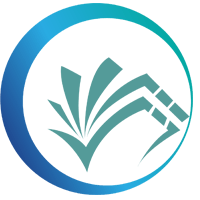
You might believe you're just reaching for your phone out of habit, but could it be something more? Many of us confuse habits with addictions, missing crucial signs that our behaviors have crossed a line. This distinction isn't just academic—it determines whether you can manage change on your own or need professional help. Understanding where your behaviors fall on this spectrum could be the key to regaining control and creating meaningful change in your life.
The Science Behind Habit Formation and Addiction
The terms "habit" and "addiction" are often used interchangeably, but research in neuroscience reveals distinct differences between the two.
Habits are formed through a process known as the habit loop, where cues trigger actions that yield rewards, reinforcing behaviors in the brain's basal ganglia and making them automatic.
In contrast, addiction involves the hijacking of this natural process. The consumption of addictive substances leads to intense dopamine surges that overwhelm the brain's control systems, resulting in tolerance and dependence. This can lead to compulsive behavior, where an individual feels compelled to continue using the substance despite negative consequences.
Understanding the distinction between habits and addiction is crucial for developing effective strategies for breaking negative behaviors and developing healthier ones.
Treatment centers like https://milehighrecoverycenter.com/ utilize this neurological understanding to design therapeutic approaches that address both the habitual and addictive aspects of substance use disorders.
Key Differences Between Habits and Addictions
The neural mechanisms underlying habits and addictions highlight distinct differences between the two. Habits can be altered with relatively minimal effort, whereas addiction is characterized by a significant loss of control. For instance, a daily coffee routine is considered a habit, whereas continued substance abuse despite adverse consequences is indicative of addiction.
A key distinction between habits and addictions is the presence or absence of intense cravings and withdrawal symptoms. Habits don't typically trigger such symptoms when broken, whereas addictions produce powerful physical and psychological dependencies that often necessitate professional intervention to overcome.
The primary difference between habits and addictions lies in the degree of control exerted over the behavior. Habits are managed consciously, whereas addictions drive compulsive behavior that exceeds rational control.
Recognizing this distinction is crucial for implementing appropriate interventions, as it can help prevent a habit from escalating into an addiction.
Warning Signs: When a Habit Becomes an Addiction
Recognizing when a harmless habit has evolved into a harmful addiction can be challenging for many individuals caught in the grip of destructive behaviors. To identify addiction, look for signs such as withdrawal symptoms emerging upon stopping, indicating physical dependence.
If you're repeatedly engaging in behavior despite negative consequences to health or relationships, that's a warning sign. Multiple unsuccessful attempts to quit suggest you've lost control. The compulsive nature of addiction often leads to putting yourself in risky situations to satisfy your urges.
When intense cravings dominate your thoughts and you find yourself prioritizing addiction over essential responsibilities, it's time to seek professional help.
Addiction is characterized by physical dependence, negative consequences, and loss of control. Withdrawal symptoms, such as tremors, seizures, or nausea, can occur when attempting to stop or reduce substance use.
Engaging in behavior despite negative consequences, such as relationship problems, financial difficulties, or health issues, is another indicator of addiction. Multiple unsuccessful attempts to quit or reduce substance use suggest a loss of control and a need for professional help.
Seeking professional help is crucial for individuals struggling with addiction. Treatment options, such as counseling, therapy, or support groups, can help individuals manage their addiction and achieve recovery.
It's essential to address addiction promptly and seek help from qualified professionals to overcome its negative consequences.
Breaking the Cycle: Effective Strategies for Change
Breaking destructive cycles involves recognizing personal triggers that contribute to unwanted behavior. Identifying these triggers enables individuals to develop strategies to modify their habits.
Implementing small, gradual changes is often more effective than attempting to completely stop an addictive behavior all at once.
Addressing the underlying causes of destructive patterns can be achieved through stress reduction techniques, such as mindfulness, which can enhance willpower. Setting specific, achievable goals and tracking progress can also facilitate change.
Utilizing support systems, including professional mental health services or trusted individuals, can provide accountability and help maintain motivation.
The process of breaking free from destructive cycles requires patience and self-compassion, as individuals work to develop healthier alternatives to replace maladaptive habits.
This process can be supported by evidence-based strategies and techniques, which can be tailored to meet the unique needs and circumstances of each individual.
Seeking Professional Help: When and How to Get Support
Recognizing the need for professional help is a crucial step in addressing addictive behaviors. Self-help strategies can be effective for changing habits, but they may not be sufficient for individuals struggling with substance use disorders or other addictive behaviors. In such cases, seeking professional intervention can provide the necessary support and guidance for recovery.
Professional treatment programs offer a range of services, including medically-assisted detox, counseling, and therapy. These programs are designed to provide a structured and supportive environment that can help individuals overcome their addictive behaviors.
Early intervention is critical, as it can significantly improve the chances of successful recovery. Integrated treatment approaches, which combine multiple therapeutic modalities, have been shown to be effective in addressing addictive behaviors.
Group therapy, in particular, can provide a sense of community and support, which is essential for recovery. Experiential approaches, such as cognitive-behavioral therapy, can also be effective in helping individuals identify and change negative thought patterns and behaviors that contribute to their addictive behaviors.
Conclusion
By understanding the distinction between habits and addictions, you're empowered to take control of your behaviors. Remember, habits can be redirected through mindful intervention, while addictions require comprehensive support. Don't hesitate to seek professional help if you're struggling with compulsive behaviors that disrupt your life. With the right knowledge and resources, you'll be better equipped to cultivate healthy patterns and break destructive cycles.

